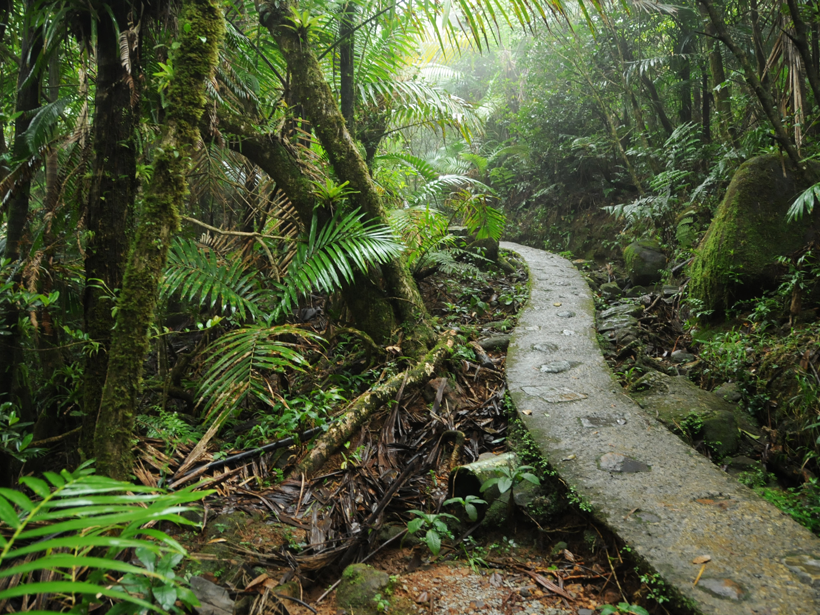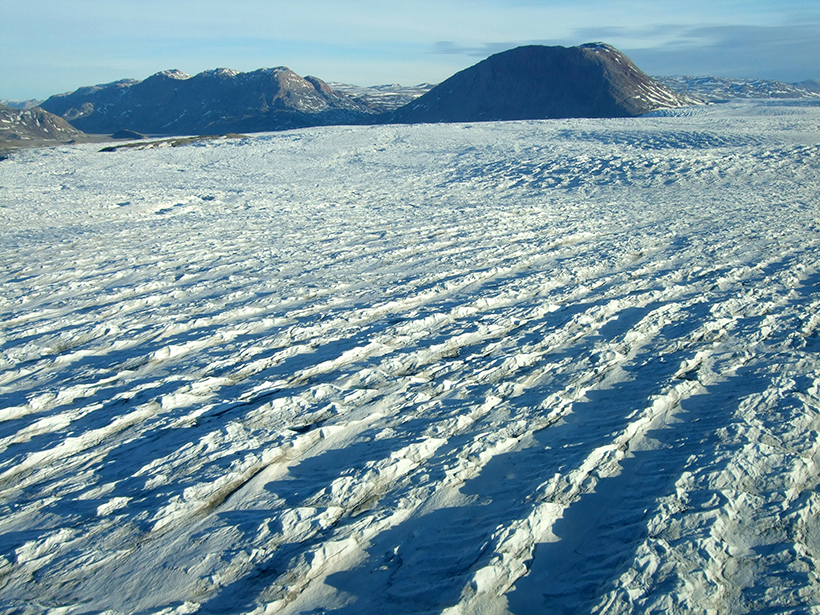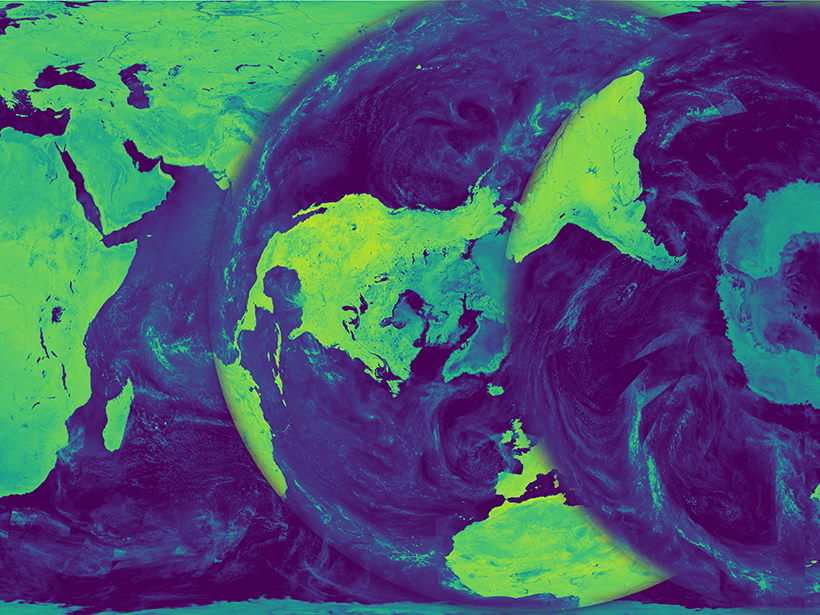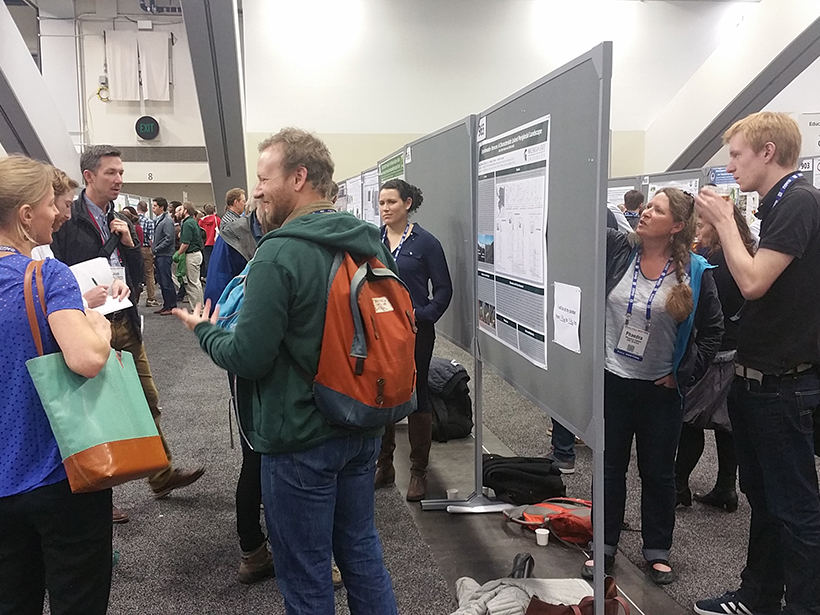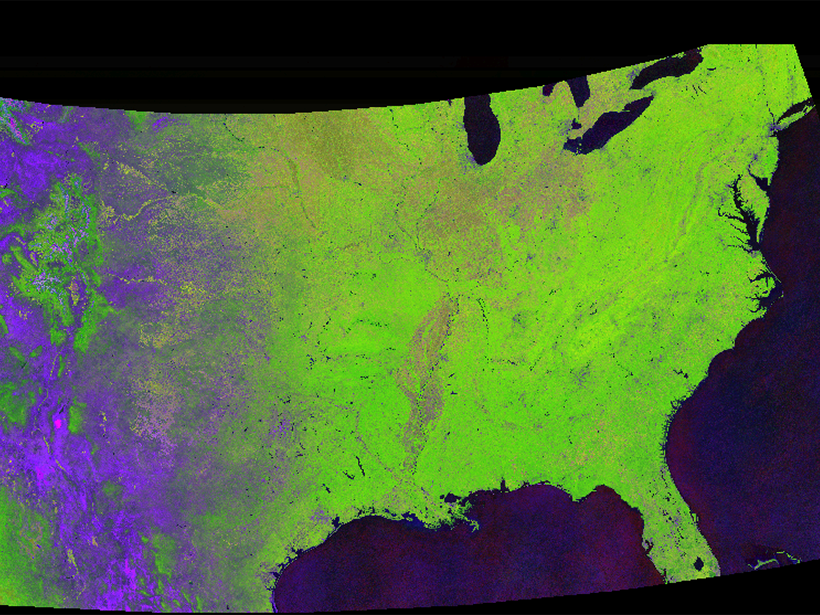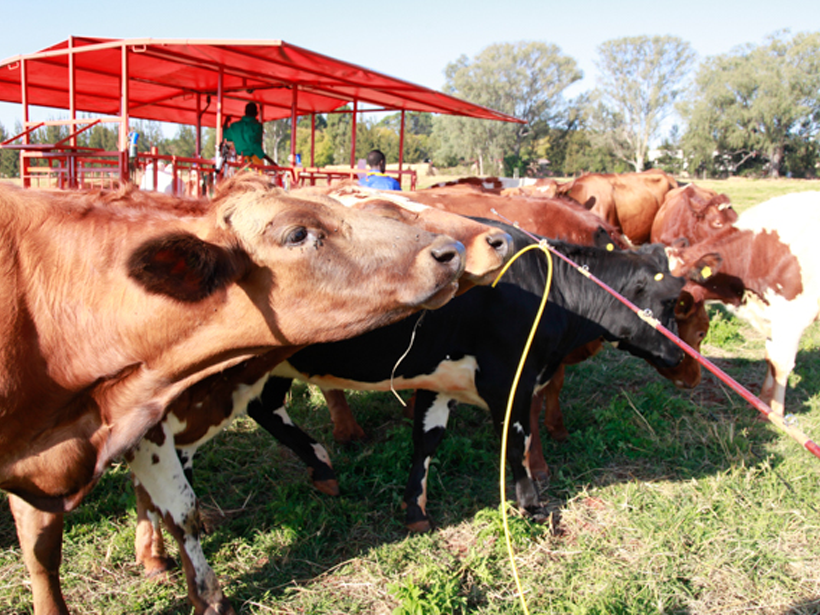Accurate measurements of changes in sea and land levels with location and time require making precise, repeated geodetic ties between tide gauges and satellite positioning system equipment.
Climate Change
The Pace of Change on Tropical Landscapes
Emerging Issues in Tropical Ecohydrology; Cuenca, Ecuador, 5–9 June 2016
Using Landsat to Take the Long View on Greenland's Glaciers
A new web-based data portal gives scientists access to more than 40 years of satellite imagery, providing seasonal to long-term insights into outflows from Greenland's ice sheet.
How Global Warming's Effect on Clouds May Make It Rain Harder
More clustering of clouds due to higher temperatures increases the likelihood of heavy downpours.
Bringing Earth's Microwave Maps into Sharper Focus
New processing capabilities improve the spatial resolution of satellite microwave data, enabling scientists to analyze trends in coastal regions and marginal ice zones.
Major Ocean Circulation Pattern at Risk from Greenland Ice Melt
The current warming trend could mean the collapse of ocean's global conveyor belt, which would have far-reaching effects on climate around the world. But this collapse could still be avoided.
Scientists Ponder the Way Forward Under Incoming Administration
Eos asked several attendees of the American Geophysical Union's Fall Meeting for reactions to the U.S. national election. Here are their thoughts.
Tracking Global Change with a Cloud-Based Living Atlas
With their feet in the cloud, Descartes Labs is pushing the limit of how we study the Earth with satellite images.
Using Isotope Fingerprints to Solve a Methane Mystery
Atmospheric methane levels are rising, and isotopic ratios within the greenhouse gas suggest that the tropics may be to blame.
A Quest to Put Sea Level Rise Data in Your Pocket
A new climate change app uses interactive data maps to engage users and prompt the exploration of questions related to changing sea levels and climate vulnerability.


